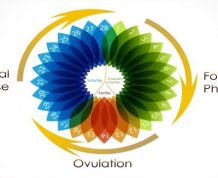In vitro fertilization, often referred to as IVF, represents a viable solution for numerous couples who have already tried several different conventional methods to conceive, but are still childless. The method mainly consists of fertilizing the egg of the female partner or an egg taken from a donor with the sperm taken from the male partner or a donor and of putting the embryo into the woman’s womb, where it will hopefully grow to be a healthy, happy baby. In what follows, we will answer some of the most common questions about this complex method, with a few basic issues of in vitro explained as well. Claim Your 20 Free Pregnancy Tests – Click Here

IVF is recommended for a number of special physical conditions, including both male and female related infertility. Ovulation dysfunctions, disorders of the womb or of the fallopian tubes, problems related to the quantity or the quality of the sperm, infertility caused by the incompatibility of the sperm and the egg, and unexplained infertility that has no detectable underlying cause are all conditions for which IVF is highly recommended.

The procedure of in vitro fertilization consists of 5 phases. If IVF is performed with the woman’s own eggs, in the first phase of the treatment, medication is prescribed to stimulate the production of healthy eggs by the ovaries, followed by the second phase of collecting the healthy eggs through a minor surgical intervention performed under partial anesthesia.
Then the sperm is collected from the father-to-be or a donor, and the egg is combined with the sperm within laboratory circumstances to achieve fertilization. The embryo is kept in the test tube for a few days, and then it is transferred into the mother’s uterus.

Like any procedure involving surgical interventions and treatment with hormones, IVF also implies a certain amount of risks. In the first phase of IVF, the ovaries are stimulated to produce eggs, which may occasionally result in ovarian hyper stimulation.
This condition usually has mild symptoms like nausea, abdominal pain, vomiting or lack of appetite. The risks associated with the egg retrieval phase are mainly the risks carried by anesthesia in general. Assisted reproductive technologies generally carry the risk of multiple pregnancies, so IVF patients have a higher chance of having twins.
IVF is one of the artificial reproductive practices most frequently used, with a very high success rate. If you have more questions or you would like to have in vitro explained in more details, you can turn to fertility clinic, where you can get all the information you need about procedures and costs as well.










Comments